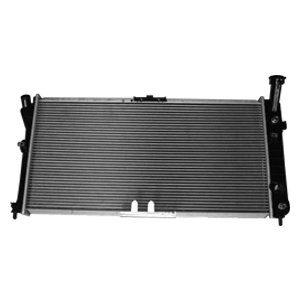News
New Types of Auto Silicone Hose Materials
As the automobile develops towards the direction of high speed, high functionality, comfort and environmental protection, the development requirements of the auto silicone hose also becomes higher. Oil resistance, high temperature resistance, low refrigerant permeability and long service life becomes the development mainstream of aluminum racing radiators.
The auto silicone hose has various kinds, such as fuel hose, air conditioner hose, radiator hose, brake hose and so on. Every silicone hose adopts different materials. Firstly, fuel hose: with the use of unleaded gasoline and jet device, the structure and materials of the motorcycle silicone hose have been greatly changed. Now the inner rubber layer uses the fluorine rubber and acrylic rubber to replace the nitrile rubber. The composite structure of the inner rubber layer can lower the fuel permeability and improve the heat resistance performance. The outer rubber layer is epichlorohydrin rubber; the enhancement layer uses the aromatic amide fiber.
Secondly, air conditioner hose: it adopts the composite structure of the rubber and resin. The inner rubber layer is composed of a layer of resin and a layer of rubber. The structure is considered to be the best choice of the automotive air conditioning refrigerant.

Thirdly, radiator hose: now the radiator hose's production way adopts the peroxide system to replace the sulfur vulcanization system. The kind of auto silicone hose can protect the environment and save the energy. Adopting the peroxide to produce the hose has become the mainstream. It has the many advantages. The heat resistance performance of the peroxide vulcanized auto radiators is better. Because the sensitivity degree of the hose electrochemical corrosion depends largely on the vulcanization system, the peroxide cross-linked rubber glue has better electrochemical corrosion resistance performance than the sulfur vulcanization glue.
Brake hose: previously, the inner rubber layer of the brake hose mainly adopts the styrene butadiene rubber. Now the butyl rubber replaces the styrene-butadiene rubber. The material meets the requirements of the automobile industry development. The enhancement layer uses the polyester, polyvinyl alcohol or rayon fiber layer. The inner rubber layer can also use the nylon; the outer layer can also adopt the chlorosulfonated polyethylene rubber. These materials all have good aging resistance and moisture permeability performance.
In addition to above the auto silicone hoses, there are still other hoses. These automobile rubber hoses all adopt new materials to meets new development trend. At home and abroad, the auto silicone hose develops towards the direction of high performance and energy consumption.
Related articles:

